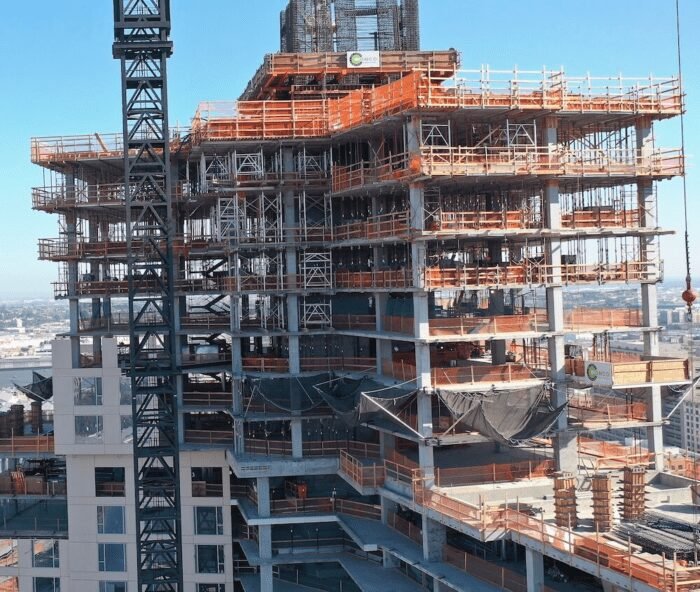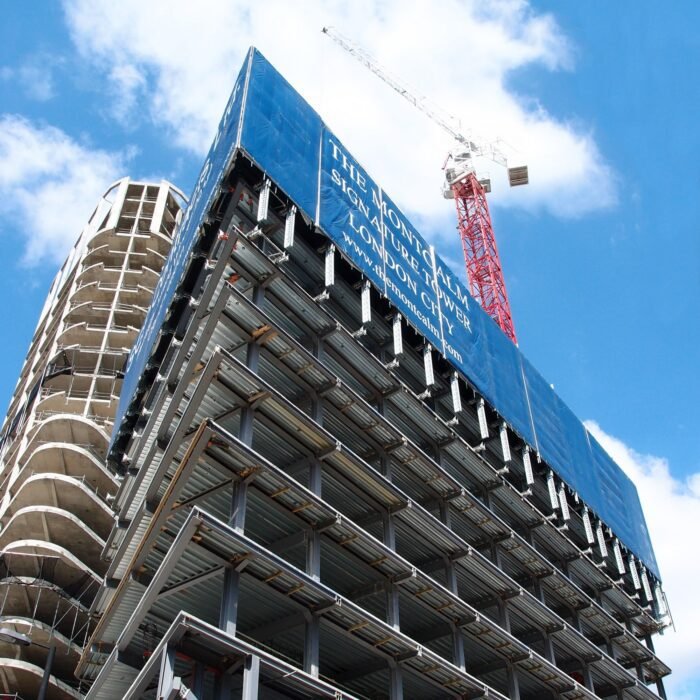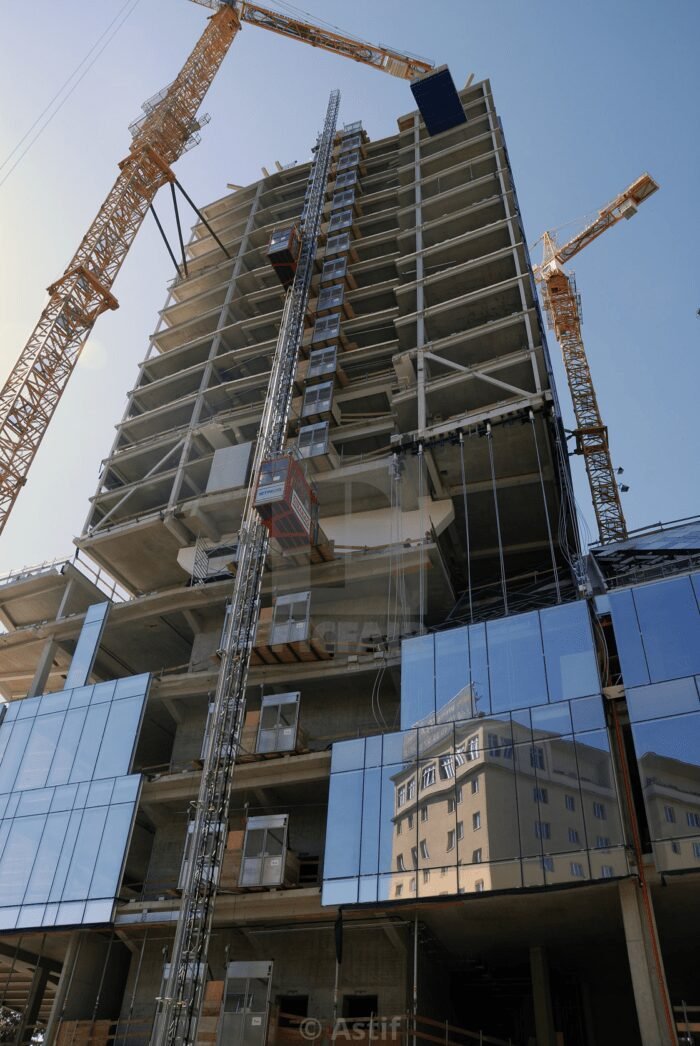Pros and Cons of High Rise Construction

Pros and Cons of High Rise Construction
Introduction
High-rise construction has become a prevalent trend in urban areas, offering a solution to limited space and accommodating the growing population. These towering structures have their fair share of advantages and disadvantages. In this article, we will explore the pros and cons of high-rise construction and delve into the impact it has on various aspects of urban development and lifestyle.
Table of Contents
- Benefits of High-Rise Construction
- Maximizing Land Use Efficiency
- Stunning Views and Iconic Landmarks
- Promoting Sustainable Urbanization
- Challenges of High-Rise Construction
- Structural Complexity and Cost
- Safety Concerns and Disaster Risks
- Social Isolation and Community Fragmentation
- Economic Implications
- Job Creation and Economic Growth
- Increased Property Value and Revenue Generation
- Income Disparity and Gentrification
- Environmental Considerations
- Vertical Green Spaces and Urban Biodiversity
- Energy Efficiency and Sustainable Design
- Construction Waste and Carbon Footprint
- Impact on Lifestyle and Well-being
- Access to Amenities and Convenience
- Noise and Air Pollution
- Psychological Effects and Social Interaction
- Conclusion
- FAQs (Frequently Asked Questions)
- Are high rise buildings more prone to earthquakes?
- How do high-rise constructions affect traffic congestion?
- What measures are taken to ensure the safety of high-rise buildings during emergencies?
- Do high-rise buildings contribute to the urban heat island effect?
- Are high-rise constructions suitable for all types of cities?
Benefits of High Rise Construction
Maximizing Land Use Efficiency
One of the key advantages of high-rise construction is the ability to optimize land use in densely populated areas. By building upwards, cities can accommodate more people, businesses, and services within a limited space. This vertical expansion helps combat urban sprawl and reduces the pressure to develop greenfield sites. High-rise buildings allow cities to make the most of their available land, leading to efficient land utilization and preserving natural resources.

Stunning Views and Iconic Landmarks
High-rise buildings often serve as architectural marvels and iconic landmarks that define the skyline of a city. From observation decks and rooftop gardens, residents and visitors can enjoy breathtaking panoramic views of the surrounding areas. These structures contribute to the aesthetic appeal of urban landscapes, attracting tourists and fostering a sense of pride among the local community.
Promoting Sustainable Urbanization
With the world’s population continuously increasing, sustainable urbanization has become a pressing concern. High rise construction offers an opportunity to develop compact, walkable cities with reduced commuting distances. By concentrating people and resources in vertical communities, the need for long-distance travel can be minimized, resulting in lower carbon emissions and a more sustainable urban environment.
Challenges of High Rise Construction
Structural Complexity and Cost
Designing and constructing high-rise buildings require advanced engineering techniques and materials to ensure structural integrity and stability. The complexity of such projects often leads to higher costs and longer construction timelines. Engineers must carefully consider factors like wind loads, foundation requirements, and seismic resistance to ensure the safety and longevity of these towering structures.

Safety Concerns and Disaster Risks
Tall buildings come with inherent safety concerns, especially during emergencies such as fires or earthquakes. Evacuation procedures, fire suppression systems, and emergency access points need to be meticulously planned and implemented. Additionally, high rise constructions in earthquake-prone regions require specific design considerations to withstand seismic activities and protect occupants.
Social Isolation and Community Fragmentation
While high rise buildings offer vertical communities, they can sometimes lead to social isolation and fragmented neighborhoods. The sheer number of residents living in close proximity may hinder interpersonal connections and a sense of community. It is crucial to incorporate communal spaces, such as parks, community centers, and shared facilities, to promote social interaction and a cohesive neighborhood spirit.
Economic Implications
Job Creation and Economic Growth
High rise construction projects create employment opportunities for various sectors, including architecture, engineering, construction, and property management. These developments stimulate economic growth by attracting investments, generating revenue through property taxes, and fostering business activities in the surrounding areas. Job creation and economic prosperity are significant advantages associated with high rise construction.
Increased Property Value and Revenue Generation
The demand for living and working spaces in high rise buildings often leads to increased property values. As the population continues to grow, the scarcity of available land makes high rise properties desirable, driving up prices and potentially benefiting property owners. Additionally, these developments contribute to local economies through rent, lease agreements, and the establishment of commercial spaces within the buildings.

Income Disparity and Gentrification
While high rise construction can bring economic benefits, it can also exacerbate income disparities and gentrification. As property values rise, lower-income residents may struggle to afford housing in these areas, leading to displacement and social inequality. Careful urban planning and the implementation of affordable housing initiatives are necessary to address these concerns and ensure inclusive development.
Environmental Considerations
Vertical Green Spaces and Urban Biodiversity
High rise constructions can incorporate vertical green spaces, such as rooftop gardens and living walls, to promote urban biodiversity and enhance the aesthetic appeal of the buildings. These green elements contribute to air purification, reduce the urban heat island effect, and provide habitats for birds and insects. Integrating nature into vertical environments helps create more sustainable and livable cities.
Energy Efficiency and Sustainable Design
Efficient energy consumption and sustainable design practices are essential in high rise construction. Utilizing technologies like energy-efficient lighting, advanced HVAC systems, and smart building management can significantly reduce energy consumption and minimize the carbon footprint. Incorporating renewable energy sources, such as solar panels or wind turbines, further enhances the sustainability of high rise buildings.
Construction Waste and Carbon Footprint
Constructing high rise buildings involves substantial quantities of materials, which can lead to increased construction waste and environmental impact. It is crucial to prioritize recycling and waste management strategies to minimize the carbon footprint associated with these projects. Using eco-friendly building materials and adopting sustainable construction practices contribute to the overall environmental performance of high rise constructions.
Impact on Lifestyle and Well-being
Access to Amenities and Convenience
High rise buildings often offer a range of amenities and services within their premises or in close proximity. Residents can benefit from facilities such as gyms, swimming pools, shopping centers, and restaurants, providing convenience and enhancing their quality of life. The proximity of essential services and recreational opportunities is a significant advantage that high rise living can offer.
Noise and Air Pollution
Living in densely populated high rise buildings may expose residents to increased levels of noise and air pollution. Factors such as traffic noise, construction activities, and proximity to industrial areas can affect the overall well-being of individuals. Implementing sound insulation measures, air filtration systems, and urban planning strategies to mitigate pollution sources are crucial for ensuring a healthy living environment.

Psychological Effects and Social Interaction
The vertical nature of high rise buildings can influence psychological well-being and social interaction. Some individuals may experience feelings of isolation or disconnection due to the lack of direct contact with nature or the community. Incorporating green spaces, communal areas, and fostering a sense of belonging within the building design can contribute to residents’ mental health and encourage social interactions among neighbors.
Conclusion
High rise construction presents a mix of advantages and challenges for urban development. It maximizes land use efficiency, provides stunning views, and promotes sustainable urbanization. However, it also entails structural complexity, safety concerns, and potential social isolation. The economic implications involve job creation, increased property values, but also income disparities. Environmental considerations revolve around urban biodiversity, energy efficiency, and construction waste management. Lastly, high rise buildings impact lifestyle and well-being by offering convenience but also exposing residents to noise and pollution. Balancing these factors is essential to create livable, inclusive, and sustainable urban environments.
FAQs (Frequently Asked Questions)
- Are high rise buildings more prone to earthquakes?
- High rise buildings in earthquake-prone areas require specific design considerations to ensure their structural integrity and the safety of occupants. Engineering techniques, such as base isolation and damping systems, are employed to minimize seismic risks.
- How do high rise constructions affect traffic congestion?
- High rise constructions can contribute to increased traffic congestion in the immediate vicinity due to higher population density. Proper urban planning, including the provision of adequate transportation infrastructure, public transit options, and traffic management strategies, is necessary to mitigate congestion.
- What measures are taken to ensure the safety of high rise buildings during emergencies?
- High rise buildings are equipped with various safety features, including fire suppression systems, emergency evacuation plans, and designated emergency access points. Regular inspections, maintenance, and adherence to building codes and regulations are essential to ensure occupant safety.
- Do high rise buildings contribute to the urban heat island effect?
- High rise buildings can contribute to the urban heat island effect due to the concentration of heat-absorbing materials, reduced green spaces, and limited air circulation. Incorporating vertical green spaces, reflective surfaces, and energy-efficient cooling systems can help mitigate this effect.
- Are high rise constructions suitable for all types of cities?
- The suitability of high rise constructions depends on various factors, including population density, land availability, urban planning goals, and cultural preferences. Each city should carefully consider its unique characteristics and objectives when deciding on the suitability of high rise developments.








